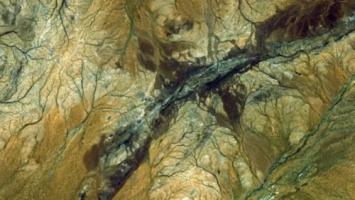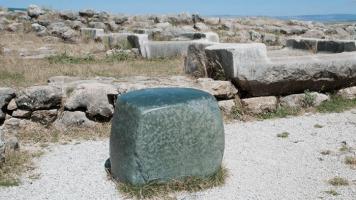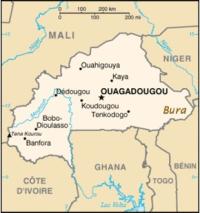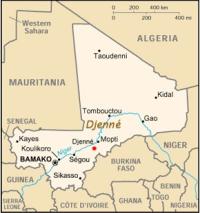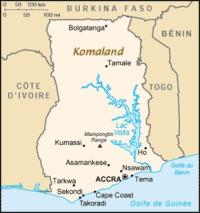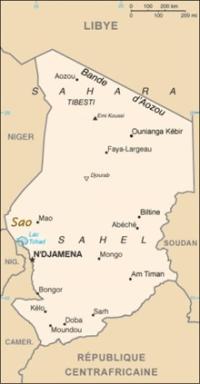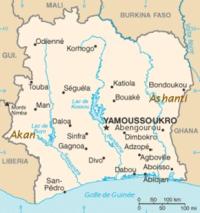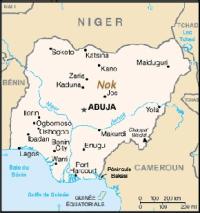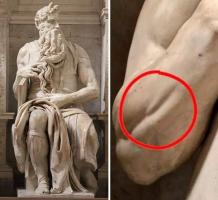Copy Link
Add to Bookmark
Report
Info-Atari16 Digest Vol. 91 Issue 586

Info-Atari16 Digest Sat, 9 Nov 91 Volume 91 : Issue 586
Today's Topics:
68030 and PC-Ditto?
8mhz ST = 16mhz 386 (2 msgs)
Gnumake under Hisoft Craft shell (2 msgs)
gnuucp
Hard Disk Recording
how fast is an 8 MHz 68000?
Is It Kosher?
PD C compilers
So, This is Your first time installing TeX on an Atari ST!
Source-level debuggers for C?
Stacy
TT-simms question
using less.ttp as the Neodesk pager (2 msgs)
WD1772 IC
Welcome to the Info-Atari16 Digest. The configuration for the automatic
cross-posting to/from Usenet is getting closer, but still getting thrashed
out. Please send notifications about broken digests or bogus messages
to Info-Atari16-Request@NAUCSE.CSE.NAU.EDU.
Please send requests for un/subscription and other administrivia to
Info-Atari16-Request, *NOT* Info-Atari16. Requests that go to the list
instead of the moderators are likely to be lost or ignored.
If you want to unsubscribe, and you're receiving the digest indirectly
from someplace (usually a BITNET host) that redistributes it, please
contact the redistributor, not us.
----------------------------------------------------------------------
Date: 9 Nov 91 21:18:59 GMT
From: clarkson!news@uunet.uu.net (AAron nAAs)
Subject: 68030 and PC-Ditto?
To: Info-Atari16@naucse.cse.nau.edu
From article <25072@sdcc6.ucsd.edu>, by atilghma@sdcc13.ucsd.edu (Adam
Tilghman):
> In article <1991Oct29.200512.1@uavax0.ccit.arizona.edu>
t32404665@uavax0.ccit.arizona.edu writes:
>>Has anybody considered the effect that one of the 68030 accelerators might
>>have on PC-Ditto I? Maybe it would be speeded up enough to make atually
> Because most low-level software written before 1990 assumes that
> you have a 68000, PC-Ditto would probably crash and die (can anyone
PC-Ditto didn't work when I had a 68010.
-AAron
------------------------------
Date: 9 Nov 91 17:47:28 GMT
From:
noao!ncar!asuvax!cs.utexas.edu!sdd.hp.com!uakari.primate.wisc.edu!doug.cae.wisc
.edu!carter@arizona.edu (Gregory Carter)
Subject: 8mhz ST = 16mhz 386
To: Info-Atari16@naucse.cse.nau.edu
In article <291C022F.7817@ics.uci.edu> jvance@ics.uci.edu (Joachim Vance)
writes:
>In article <1991Nov8.095052.24727@doug.cae.wisc.edu> carter@cae.wisc.edu
(Gregory Carter) writes:
>>
>>After looking at this thread long enough, I don't think anyone has put it
>>more forcefully than Chris has.
>>
>>The PC's 386/486 machines are actually vastly under rated machines simply
>>because they are stuck running DOS applications.
>>
> So, what applications are they supposed to run to take advantage of
>their speed? Windows? From what I hear, Windows just slows things
[...]
>I don't get it. Sounds like an '030 accelerator for the ST will blow
>most any 386 out of the silicon and possibly match or beat any 486
>running similar applications. So where's the power?
>
>--
>Joachim Vance
>~%~%~%~%~%~%~%~%~%~%~%~%~%~%~%~%~%~%~%~%~%~%~%~%~%~%~%~%~%~%~%~%~%~%~%
> I am antisesquipedalian--Opposed to the use of long words.
>~%~%~%~%~%~%~%~%~%~%~%~%~%~%~%~%~%~%~%~%~%~%~%~%~%~%~%~%~%~%~%~%~%~%~%
I think your missing the point here. I am talking about raw performance.
For example you say what applications are the 386 machines suppose to
run if they can't run DOS applications...
And thats the crux of the problem. Thats all 386/486 machines have to run.
Your right. Thats why they are at an unfair disadvantage.
So what I am trying to say is that the software is responsible for
making all those 386/486 machines run in brain dead real mode.
If you gave the 386/486 machines half way decent software to run that
takes advantage of the more modern features of these processors, the ST
wouldn't seem so fast.
Trust me...:)
-------------------------------------------------------------------------------
Employed: Computer Aided Engineering Center - University Wisconsin - Madison
Major: Computer Science - Emphasis: System Design Tools, User Interfaces
Phone Home: (608) 264-3622 - Work: (608) 262-5349
Current Project: NO, ITS NOT a VIDEO GAME. Thank You.
-------------------------------------------------------------------------------
My Current Wife: Atari MEGA STE 4/50 16Mhz 68000 1.8 Mips
Runs all Mac Software, quite nicely.
(Third Person in the US to own one)
Thinking about getting an A3000 mistress...:)
-------------------------------------------------------------------------------
ACICS The Ultimate Communciations System, and its MINE! HA HA HA!
------------------------------
Date: 9 Nov 91 20:35:41 GMT
From:
noao!ncar!elroy.jpl.nasa.gov!usc!apple!portal!cup.portal.com!Bob_BobR_Retelle@a
rizona.edu
Subject: 8mhz ST = 16mhz 386
To: Info-Atari16@naucse.cse.nau.edu
Of course, everyone is carefully ignoring the fact that it doesn't matter
HOW fast a computer is, if it's unsupported.
Those slow '386 and '486 machines belong to a viable marketplace where the
software base is growing and improving. Windows may be slow today, but at
least there's a chance it'll be improved tomorrow. You can't say that about
very many ST programs.
It's a little like owning a 426 Hemi Barracuda and sneering at all the
"performance cars" of today... except that you can't find Premium Leaded
gas to drive it anymore.
BobR
------------------------------
Date: 9 Nov 91 15:45:00 GMT
From:
noao!asuvax!cs.utexas.edu!swrinde!gatech!bloom-beacon!eru!hagbard!sunic!chalmer
s.se!dtek.chalmers.se!dxper@arizona.edu (Per Anders Olausson)
Subject: Gnumake under Hisoft Craft shell
To: Info-Atari16@naucse.cse.nau.edu
jgj@ssd.csd.harris.com (Jeff Jackson) writes:
>> Is there anyone with inside knowledge about the Gnumake program which knows
>> if it is possible to execute commands via the standard system() interface
>> which CRAFT supports (which would then give me the
>You might try putting the line
>SHELL=path_to_your_shell
>in your makefiles. If your shell has special hooks for other programs to
>ask a already running shell to execute commands for them, you would
>half to hack the Gnumake sources and rebuild make.
Perhaps this is the only way, I guess.
>As a side note, bash 1.10 is available on atari archive now and next
>week, the gnu utilities (such as touch) will be made available. If you
>want a truely unix-like environment (like long filenames and symbolic
>links), I strongly recommend this setup.
Well that sound interesting but I don't expect that to work as error-free as
my current setup is doing now. Craft has enough Unixification for now but
when the bash thing has been tested somewhat more it probably will offer
more.
pao
--
.............................Andrew Olausson................................
............................Systems Architect...............................
..........................dxper@dtek.chalmers.se............................
..............................pao@proxxi.se.................................
------------------------------
Date: 9 Nov 91 14:21:43 GMT
From: noao!asuvax!cs.utexas.edu!milano!cactus.org!covert@arizona.edu (Richard
Covert)
Subject: Gnumake under Hisoft Craft shell
To: Info-Atari16@naucse.cse.nau.edu
In article <6575@chalmers.se> dxper@dtek.chalmers.se (Per Anders Olausson)
writes:
>
> I've just started using Gnumake in my system which I run under the Hisoft
> CRAFT shell. Previously I used the make which came with the shell, but
> unfourtunately I found it to be a not-so-good-version.
>
> Gnumake seems to be working OK, but at some point I end up having a need
> to execute shell commands (most notably the "touch" command) but this is
> an internal function of the shell.
>
> Is there anyone with inside knowledge about the Gnumake program which knows
> if it is possible to execute commands via the standard system() interface
> which CRAFT supports (which would then give me the full abilities of the
> shell without any hassles, hopefully)...
>
> pao
>..............................Andrew Olausson................................
What is the CRAFT Shell?
I haven't seen it here in the United States.
Also, I am under the impression that Lattice C Ver 5.06 doesn't
have a complete UNIX style 'cc' command so you can't use GNU Make
(or any other make) with it.
I own LC5, but my last update was last January to version 5.06.02.
what is your latest version over there?
Also, I just got a copy of the German Turbo C compiler.
seems good but I can't read the german docs , my luck!!
.
.
.
.
.
.
.
.
.
.
--
Richard E. Covert covert@cactus.org
CACTUS ..!cs.utexas.edu!cactus.org!covert
------------------------------
Date: 29 Oct 91 11:37:02 GMT
From:
noao!asuvax!cs.utexas.edu!qt.cs.utexas.edu!yale.edu!ox.com!math.fu-berlin.de!fu
b!dobag.in-berlin.de!nicedel!lynx1!jelal!nox@arizona.edu (Juergen Lock)
Subject: gnuucp
To: Info-Atari16@naucse.cse.nau.edu
In <2531.10.91@janhh.hanse.de> jan@janhh.hanse.de (Jan Willamowius) writes:
>From article <0531.10.91@jelal.north.de>, by nox@jelal.north.de (Juergen Lock):
>>>I still have to use the UUCICO by Jan Willamowius, which is written
>>>under GFA and bombs if it's started under MinT.
>>
>> yes, GFA bugsic should be banned. :-( i guess i'll have to look
>> at this bauble uucp thing one day... (btw, is there a newer version
>> than that posted in june?)
>Don't blame me I just inherited it. :-)
hey i didn't blame you, :-) only the authors of this silly joke
of a programming language.
>Version 3.2 is to be posted RSN, I just want to make sure it runs with
>all the different UUCP implementations. Be patient...
will it also run with MiNT? may i put it in the background or
even in a crontab? now _that_ would be what i call a real uucico... :-)
(and if not, can anybody tell me the current status on bauble UUCP?
thanx!)
>- Jan
c u,
Juergen
--
J"urgen Lock / ..!nicedel!lynx1!jelal!nox / ** !! dead{hanseat!jelal} !! **
...ohne Gewehr
------------------------------
Date: 6 Nov 91 03:25:17 GMT
From: noao!asuvax!cs.utexas.edu!utgpu!utzoo!mnetor!intacc!zerobeat@arizona.edu
(Ferenc Szabo)
Subject: Hard Disk Recording
To: Info-Atari16@naucse.cse.nau.edu
>> friedric@mdd.comm.mot.com (Bernd Friedrich) writes:
>
>Unfortunately, according to an article in either Keyboard or Electronic
>Musician (I can't remember which or when), Digidesign is no longer supporting
>Sound Tools for the Atari. If this is incorrect please correct me, but none
>of their current advertising mentions Atari.
>
>If I'm going to stay with my Atari for hard disk recording, I'd like to stay
>with a company that will keep debugging and improving their hardware and
>software, as Digidesign has done for Mac Sound Tools. If PLASMEC's product
>is sound, the price is much cheaper than getting a Mac and Soundtools.
>
>So again, if anybody has any info on the PLASMEC device, please post as other
>people have e-mailed me wanting any summary of info regarding this topic.
>
>Thanks,
>Bernd
>>
The bad news here in Toronto, Canada is that Digidesign has indeed
discontinued Sound Tools for the ST. The newer MegaSTe and TT were
to have different external card interface slots and Digidesign got fed
up and didn't want to design another card, since they already had
one for the Mega2/4 machines.
I remember being incredibly impressed last year when I got a demo on
Sound Tools for the ST. By the time I was ready to buy the system,
Digidesign stopped distribution and all the stores here were sold out.
I have had the MAC version of Sound Tools for 2 months and holy mackeral
I am very impressed. I can't remember if there were any glaring
differences between the Atari and Mac version, but I would think that
my MACIIcx runs the system faster than my Mega4 could have.
ferenc
------------------------------
Date: 9 Nov 91 19:26:55 GMT
From:
noao!ncar!elroy.jpl.nasa.gov!swrinde!cs.utexas.edu!qt.cs.utexas.edu!zaphod.mps.
ohio-state.edu!rpi!news-server.csri.toronto.edu!helios.physics.utoronto.ca!ists
!newshub.ccs.yorku.ca!yorku. (Richard Reiner)
Subject: how fast is an 8 MHz 68000?
To: Info-Atari16@naucse.cse.nau.edu
One final contribution to this debate:
The more or less comprehensive list of Dhrystone results in the
official Dhrystone 2.1 distribution contains many data points for 8MHz
68000 systems: Macintoshes (with 5 different compilers), a Motorola
PC/68000 coprocessor card, some Heurikons, an Atari Mega 2 (using
Aztec C), something from Hogg Labs, etc. All of these numbers are
between 500 and 850 dhrystones/sec.
There is one anomaly: a second entry for a Mega 2, this time using
Turbo C, which comes in at 1650 dhrystones/sec.
I'm not sure what to make of this, especially when combined with the
related claims that have been made here about Turbo C. Can Turbo C
for the Atari really generate code twice as good as that of any of the
other 15 or so 68000 compilers listed in the results table?
------------------------------
Date: 9 Nov 91 14:37:02 GMT
From: noao!asuvax!cs.utexas.edu!milano!cactus.org!covert@arizona.edu (Richard
Covert)
Subject: Is It Kosher?
To: Info-Atari16@naucse.cse.nau.edu
Is it okay to submit the PageStream fonts from GEnie
to the atari archiver?
I was hoping that some kind soul would start posting the
newer fonts for page stream 2.1 that are on GEnie.
I can go broke real fast d/ling all of the PgS 2.1
fonts now on GEnie.
So, could some one submit them here?
TIA.
--
Richard E. Covert covert@cactus.org
CACTUS ..!cs.utexas.edu!cactus.org!covert
------------------------------
Date: 29 Oct 91 12:31:20 GMT
From:
noao!ncar!zaphod.mps.ohio-state.edu!malgudi.oar.net!caen!ox.com!math.fu-berlin.
de!fub!dobag.in-berlin.de!nicedel!lynx1!jelal!nox@arizona.edu (Juergen Lock)
Subject: PD C compilers
To: Info-Atari16@naucse.cse.nau.edu
In <kgfu70INNll6@iraul1.ira.uka.de> s_grunwa@irau26.ira.uka.de (Knut Grunwald)
writes:
>So, if you want to try a bit and compile now and then Sozobon is the
>choice, if you want a programming tool, GCC is better (Turbo-C 2.0, or
>Pure-C as it is now called, is easier to use, but not PD)
well if you ever want to use non-ST sources (or just program for
MiNT), gcc wins big time over turbo C/pure C anyway.
> and don't
>mind the price of system expansion, it's the fun tax.
true. 4MB RAM, and you can even read news while gcc compiles in
background... :-)
>Knut
greetings,
Juergen
--
J"urgen Lock / ..!nicedel!lynx1!jelal!nox / ** !! dead{hanseat!jelal} !! **
...ohne Gewehr
------------------------------
Date: 9 Nov 91 23:38:57 GMT
From: noao!asuvax!cs.utexas.edu!tamsun!tamuts!n160ao@arizona.edu (Mark Lehmann)
Subject: So, This is Your first time installing TeX on an Atari ST!
To: Info-Atari16@naucse.cse.nau.edu
Here is the TeX setup document that I have been promising. I
would have sent it to the 50+ addresses individually, but I think
that would have taken me another day (given my time-schedule). So
here is the first draft. Those people requesting a first draft,
please read this and give me your positive/negative input.
Others, please press "n" to breeze past this 12 page document.
vvvvvvvvvvvvvvvvvvvvvvvv--- BEGIN HERE ---vvvvvvvvvvvvvvvvvvvvvvvvvv
So, This is Your First Time to Install TeX on an Atari ST!
(Instructions for installing an configuring TeX)
Table of contents:
Atari ST TeX experiences from the USENET . . . . . . . 1
Configuring the Plain ST TeX software
for the First Time . . . . . . . . . . . . . . . 2
The Font Conventions . . . . . . . . . . . . . . . . . 8
Using "dvieps" for EPSON 9-pin output . . . . . . . . 10
Using "dviatari" for Screen Output . . . . . . . . . . 10
Using "showdvi" for Screen Output . . . . . . . . . . 10
Using "dviprint" for EPSON 9-pin
or 24-pin Printers . . . . . . . . . . . . . . . 11
Getting 24-pin Fonts . . . . . . . . . . . . . . . . . 12
CS-TeX . . . . . . . . . . . . . . . . . . . . . . . . 12
Extra Help and Disclaimer . . . . . . . . . . . . . . 12
Atari ST TeX experiences from the USENET
========================================
TeX (pronounced "teck", where the "X" is the greek character chi)
is a book and document formatting system that gives the user the absolute
best text formatting possible.
Normally TeX is found on mainframe or mini-computers in corporations
and educational organizations. These versions of TeX are usually quite
large and robust. The printing looks great, but you have to leave home
and visit your local computer center to view a good copy of a TeX'ed
document.
Fortunately, for those users that enjoy working on a personal
computers, TeX is available on virtually every popular micro-computer
available in the 1990's. According to Bart Childs, former president of
the worldwide TeX Users' Group (TUG), the Commodore Amiga and the Atari
ST have some of the best versions of TeX available for any computer.
This article is designed to give you a current set of instructions and
comments regarding the most popular versions of TeX for the Atari ST.
The two popular flavors of TeX (as of November 1991) are:
- regular TeX (the one that must be pieced together by
the ST user)
- CS-TeX (a set of diskettes containing a complete TeX document
creation environment which fully installs
itself. Written by German Atari wizard
Christoff Strunk. )
Each version has some advantages, but neither provide all of the
advantages.
Regular TeX has the advantage of running well on computers
with a small amount of memory (1 Megabyte). It interfaces well with
several tools for printing and viewing TeX files. Its disadvantage is
So, This is Your First Time to Install TeX on Your Atari ST! Page 2
that it requires a lengthy manual installation. A manual installation
will make the installer an expert on TeX installations, though.
CS-TeX provides a full environment for creating a TeX document from
start to finish. CS-TeX provides:
- an editor,
- TeX,
- TeX format builder,
- two TeX file screen pre-viewers,
- Metafont,
- an Index builder,
- a bibliography tool,
- graphic file interfaces
- and a simple graphical user interface
The graphical user interface is optimized for people who don't like to
use a mouse, and the graphic file interfaces allow Pictures and graphs
created by other programs to be used in TeX documents.
Configuring the Plain ST TeX software for the first time
========================================================
Configuring the ST TeX software actually involves several
ordered steps.
1) Obtaining the TeX software
2) Creating a customized directory system
3) Un-archiving the TeX software
4) Setting up environment variables
5) Creating the TeX "format" files.
STEP DETAILS
============
>> 1. Obtaining the TeX software
This step has a fairly broad scope, but one source for the
Plain TeX system is the Atari Archive ftp site at the
University of Michigan in the United States. Its ftp
name and internet number are:
atari.archive.umich.edu 141.211.164.8
For the configuration instruction discussed in this document,
you should obtain the following files:
So, This is Your First Time to Install TeX on Your Atari ST! Page 3
Directory: /atari/tex/tex31
size date name
======= ============ ============
376570 Dec 31 1990 inputs.lzh
26451 Aug 14 18:57 poofiles.zoo
520881 Aug 14 18:50 texbin.zoo
342243 Dec 14 1990 tfmfonts.lzh
Directory: /atari/tex/dvi
size date name
======= ============ ============
58562 May 18 1990 dviatari.zoo (S)
239494 Apr 12 1989 dvieps.arc (P)
151658 Aug 6 12:07 shdvi10b.zoo (S,P)
Directory: /atari/tex/fonts
size date name
======= ============ ============
365612 Sep 6 1989 dvifnts1.zoo
471608 Sep 6 1989 dvifnts2.zoo
1910 Sep 6 1989 dvifntsz.hlp
208619 Sep 22 1989 showdvifonts.zoo
Most of these files are required, but some of them provide
duplicate function. The files in the "/atari/tex/dvi"
directory provide printing and pre-viewing functions. If
you have the space, get them all.
- The "dviatari.zoo" archive contains "dviatari", a screen
pre-viewer that uses the "dvifnts*.*" archives in the
"/atari/tex/fonts" directory.
- The "dvieps.arc" archive contains "dvieps" a program and
source code to print TeX's dvi-files to a 9-pin EPSON
compatible printer. "dvieps" also uses the "dvifnt*.*"
archives' font files.
- The "shdvi10b.zoo" file contains "showdvi", a pre-viewer,
and "dviprint", a dvi-file printing program. "dviprint"
will output to several types of printers including:
Epson 9-pin, Epson 24-pin, Atari SLM, and HP Laser-Jet
printers. Both programs can use the "dvifnts*.*" font
files. In addition, the programs can use "flib", font
library, files, that are in the "showdvifonts.zoo" archive.
You need at least one (S) "Screen pre-viewer" and one (S) "Dvi
file printer" archive. For either of the sets of pre-view and
print programs, you will need the "dvifnt*.*" files. If you
want to use the "flib" font library ability of the "shdvi10b.zoo"
programs, then you should get the "showdvifonts.zoo" file also.
So, This is Your First Time to Install TeX on Your Atari ST! Page 4
>> 2. Creating a customized directory system
This part requires you to think the hardest. The following
directory names are a compromise of the directory names
used by usenet users who contributed to this article.
i. Select a base directory for your files. I will use
"D:\tex" for the base directory. Edit this file (the
one that your are currently reading) with a text editor
and use the global search and replace function to change
"D:\tex" to the directory you want to use.
ii. Create a fonts directory directory:
D:\tex\fonts
This is the directory where you will place your
TeX Font Metric (tfm) fonts and possibly the device
fonts for the pre-viewer and your printer.
iii. Create a binary, or executables, directory:
D:\tex\bin
This is the directory where you will place your
".ttp", ".prg", ".tos", and ".app" files.
iv. Create an inputs directory:
D:\tex\inputs
This is the directory where you will place all of
files that TeX needs for initialization.
v. Create a format directory:
D:\tex\formats
This is the directory where you will place the files
containing a memory map of initialize TeX variables
called "format files." These format files are discussed
in sub-section ">> 5."
vi. (Optional) If you are going to use font libraries, then
you will want to make the following directory:
D:\tex\fonts\flibs
This is the directory where you will place the files
containing "pk" fonts squished into one file that
has a name in the form of "pkxxxx", where "xxxx" is
replace by a number between 0000 and 9999. The number
represents the resolution in dots-per-inch of fonts in
the font library.
So, This is Your First Time to Install TeX on Your Atari ST! Page 5
>> 3. Un-archiving the TeX software
You may have noticed that the files from the Atari Archive are
all in a ".arc", ".lzh", or ".zoo" format. Each of these must
be de-archived with their respective archive utility.
To get the appropriate archive utilities, use ftp to get an
"arc", "lzh", and "zoo" archive utility from the "/atari/archivers"
directory in the Atari Archive.
Using either a shell facility or the desktop change to the following
directories and issue the commands following them:
cd d:\tex\bin
zoo -restore texbin.zoo
zoo -restore poofiles.zoo
arc x dvieps.arc (*)
zoo -restore dviatari.zoo (*)
zoo -restore shdvi10b.zoo (*)
(*) NOTE: You only need the files that you down-loaded, as
mentioned earlier in section ">> 2."
cd d:\tex\fonts
zoo -restore dvifnts1.zoo
zoo -restore dvifnts2.zoo
lzh -restore tfmfonts.lzh (**)
(**) NOTE: You may need to use "x" instead of "-restore"
depending on your lzh utility)
if you are going to use the "flib" font library
capabilities of the "shdvi10b.zoo" archive's "showdvi" and
"dviprint" programs, then you will also need to run
zoo -restore showdvifonts.zoo
NOTE: The "showdvifonts.zoo" filename is too long for TOS.
You were required to give it a valid TOS filename
before you could down-load the file to your computer.
Use that name here.
cd d:\tex\inputs
lzh -restore inputs.lzh
>> 4. Setting up environment variables
The TeX program, the screen pre-viewers, and the dvi-file
printer programs all use environment variables to locate
necessary files.
So, This is Your First Time to Install TeX on Your Atari ST! Page 6
At the time of writing, I had only used TeX with "gulam" and
"NeoDesk". Several environment variable programs are available
for the ST. Follow the documentation with the programs, setting
the environment variables to the same values listed below.
TEXFONTS = D:\tex\fonts
TEXINPUTS = .;D:\tex\inputs
TEXPOOL = D:\tex\bin
PKDIR = D:\tex\fonts
FLIBDIR = D:\tex\fonts
DVICONFIG = D:\tex\config
Explanation:
TEXFONTS tells TeX where the TeX Font Metric (tfm) fonts
exist. The tfm fonts are special fonts that TeX uses
when creating a dvi-file.
TEXINPUTS tells TeX where to look for input files. The
"." is included to make TeX look at the current
directory that you are using.
TEXPOOL tells TeX where the binary and the pool (.poo) files
exist.
The last three variables are for the "shdvi10b.zoo"
programs, "showdvi" and "dviprint". If you are not going
to use these programs, then simply leave these variables out.
PKDIR tells the "shdvi10b.zoo" programs where to find the
individual "pk" font files.
FLIBDIR tells the "shdvi10b.zoo" programs where to find the
files containing the "flib" font libraries.
DVICONFIG tells the "shdvi10b.zoo" programs where to find their
configuration files.
NOTE: In the "gulam" shell, set the variables using the
following form.
setenv VARIABLENAME 'data'
for example,
TEXINPUTS = .;D:\tex\inputs
would be
setenv TEXINPUTS = '.;D:\tex\inputs'
So, This is Your First Time to Install TeX on Your Atari ST! Page 7
>> 5. Creating the TeX "format" files.
At this point TeX is practically running, and you could even start
using TeX at this point if you used very low level TeX commands.
These low level commands are to TeX as assembly language is to
a high-level language compiler. Attempting to use TeX at this
point would probably yield an error stating something like:
Can't find `PLAIN' format file.
You must generate this one first.
OR
Format file error. Aborting
Because you are using high level commands when TeX needs
low level commands. To correct the problem, simply create the
format file using a feature of TeX 3.x to build the files. The
format file contains high-level TeX commands composed of the
low-level TeX commands. The following steps describe building
the main format file.
i. At the shell prompt or desktop execute TeX with the
following command and parameters:
tex plain -i
ii. When TeX has finished creating the format file, it will
stop. You must then type:
\dump
to make it create the "plain.fmt" file and exit TeX.
iii. Last, you need move the file to the "D:\tex\formats"
directory, using your favorite file utility program.
To build format file for LaTeX, replace step "i." with
tex &lplain -i
And follow steps "ii." and "iii." the same way as you did for
the TeX "plain" format file.
The font conventions
====================
TeX for the Atari uses four types of fonts:
"tfm" which are TeX Font Metrics
"pk" which are Device output fonts
"gf" which are Metafont output files
"mf" which are Metafont font programs
So, This is Your First Time to Install TeX on Your Atari ST! Page 8
The tools configured in the last section only use the "tfm" and the
"pk" fonts. The "gf" and the "mf" files will only be needed if you
desire to create fonts for which you don't already have "tfm" and "pk"
fonts. If you do create fonts, you will also need a tool called
"gftopk" which converts the "gf" Metafont output files to "pk" font
files.
Each font has a name that usually includes a point size. For
example, "cmr10" means it is the 10 point size of the Computer Modern
Roman font. That font can be scaled though. TeX has the ability to use
magnifications of fonts rather than forcing a use to create larger and
larger point sizes for the fonts.
A magnification is in terms of 1000's. A magnification of 1000
means that a font is the size for which it was designed. A
magnification of 1200 means that a font is 1.2 times the size for which
it was designed. A magnification of 850 mean that a font is 0.85
times the size for which it was designed.
Programs that use "pk" files name their font files in terms of
dots-per-inch (dpi) resolution. So the "cmr10" font for a laser printer
would be include "300" in the name, because laser printers are 300 dpi
devices.
Since printing devices print at fixed resolutions, so printing a 150
dpi font on a 300 dpi printer would result in a font looking half the
size it should be. In fact, a 150 dpi font on a 300 dpi printer
would be a font at a magnification of 0.50. A cmr10 font at a
magnification of 1200 on a 300 dpi printer would include "360" (300 x
1.2 = 360) in its name.
Because placing both the font name and the dpi size in the same
filename limits the names of the fonts, two font naming conventions have
evolved. The "dvieps" and "dviatari" programs use the first convention
and the "showdvi" and "dviprint" programs use the second convention.
These two conventions group font files into directories. The directory
contains either the font name or the dpi size, and the file inside the
directory contains the part of the full name that was not use in the
directory name. Both contain the same information, but each have a
different style of directories and files. For example, given two font
styles with three magnifications for a 300 dpi printer:
cmr10 cmrsl10
250 dpi 250 dpi
300 dpi 300 dpi
360 dpi 360 dpi
The first convention would store the fonts in the following format:
D:\tex\fonts\cmr10\250pk
D:\tex\fonts\cmr10\300pk
D:\tex\fonts\cmr10\360pk
D:\tex\fonts\cmrsl10\250pk
D:\tex\fonts\cmrsl10\300pk
D:\tex\fonts\cmrsl10\360pk
So, This is Your First Time to Install TeX on Your Atari ST! Page 9
The second convention would store the fonts in the following format:
D:\tex\fonts\250pk\cmr10
D:\tex\fonts\250pk\cmrsl10
D:\tex\fonts\300pk\cmr10
D:\tex\fonts\300pk\cmrsl10
D:\tex\fonts\360pk\cmr10
D:\tex\fonts\360pk\cmrsl10
The second convention uses fewer directories when you have many
fonts, which a normal TeX system will usually have. The first
convention uses more directories but must be used for the "dvieps" and
"dviatari" programs, which use the "dvist" font naming convention. The
"dvist"-type programs look at the TEXFONTS variable to see where the
font directories exist. So if you want to use the "dvist" type
programs, you must actually have your ".tfm" fonts mixed in with
"pk" font directories. A mixture of fonts in the same directory
makes things confusing and is not a recommended way of configuring the
fonts.
The "shdvi10b.zoo" programs, "showdvi" and "dviprint", can use the
first method of naming fonts if a simple configuration file is modified.
But, unless you are going to use both the "dvist" type programs and the
"shdvi10b.zoo" programs together, I recommend using the second method.
(You may spend some time copying the font files from the first
convention, as distributed in the "dvifnt*.*" files, to the second
convention.)
Other advantages to using the second method are:
- At a glance you can verify which fonts are available at a
certain magnification
- You don't have to make your "FOLDRxxx.PRG" so large to avoid
the "40 Folder limit" bug in TOS
- The FLIB libraries use the same type of convention
An alternate font directory structure to the one mentioned in the
second section of this document follows:
d:\tex\fonts\tfmfonts
d:\tex\fonts\screen
d:\tex\fonts\screen\font0096\cmr10.pk
d:\tex\fonts\printer
d:\tex\fonts\printer\font0300\cmr10.pk
d:\tex\fonts\flibs\pk0300
d:\tex\fonts\flibs\pk0250
an so on.
So, This is Your First Time to Install TeX on Your Atari ST! Page 10
Using "dvieps" for EPSON 9-pin output
=====================================
"dvieps" has several options. I will not cover any of them,
because the documentation supplied with "dvieps" covers all the options.
Using the first font directory/file convention from the previous
section, you should be ready to use "dvieps". Simply type:
dvieps filename.dvi {where filename is replace by
the name of the dvi-file you
are attempting to print}
and "dvieps" will create a file with a ".eps" extension containing the
appropriate EPSON 9-pin codes to make a TeX printout. Now simply use
your favorite file printing program to print the new file out. Make
sure the file printing program does not alter the file that it prints.
Gulam and some other shells attempt to beautify printed files, which
makes plain text look good, but makes dvi-files unprintable.
Using "dviatari" for screen output
==================================
"dviatari" uses the same setup and configuration that "dvieps" uses.
To view a file simply type:
dviatari filename.dvi {where filename is replace by
the name of the dvi-file you
are attempting to print}
and "dviatari" will display a few messages and then display the TeX file
in a fairly readable form.
Using "showdvi" for screen output
=================================
Both "showdvi" and "dviprint" use similar configuration files that
I will discuss in this section. Both of these configuration files should
be placed in the directory indicated by the DVICONFIG environment
variable. I suggest that you use a directory named "D:\tex\config."
The "showdvi" font configuration file is called "showdvi.fnt." An example
"showdvi.fnt" follows:
pk_str %s\%dpk
font D:\tex\fonts
flib_str pk%04d
flib D:\tex\fonts\flibs
The "%s\%dpk" in the "pk_str" line means to convert the font "cmr10"
at a resolution of 300dpi to "cmr10\300pk". The next line means that
all converted font names have a "D:\tex\fonts" added as a prefix; making
the example: "D:\tex\fonts\cmr10\300pk".
So, This is Your First Time to Install TeX on Your Atari ST! Page 11
The "pk%04d" in the "flib_str" line means to convert the font
"cmr10" at a resolution of 300dpi to "pk0300". The next line means that
all converted font names have a "D:\tex\fonts\flibs" added as a prefix.
This means that "dviprint" and "showdvi" will look into the
"D:\tex\fonts\flibs\pk0300" flib library file for the "cmr10" font.
For an additional example, lets make another configuration file for
the alternate directory structure.
pk_str font%04d\%s
font d:\tex\fonts\screen
flib_str pk%04d
flib d:\tex\fonts\flibs
Now to use "showdvi" simply type:
showdvi filename.dvi {where filename is replace by
the name of the dvi-file you
are attempting to print}
and "showdvi" will display the TeX file on the screen.
Using "dviprint" for EPSON 9-pin or 24 pin printers
===================================================
Create or modify the "dviprint.fnt" file located in the directory
indicated by the DVICONFIG environment variable that you set earlier.
Make the file nearly identical, but alter:
pk_str font%04d\%s
font d:\tex\fonts\screen
TO
pk_str font%04d\%s
font d:\tex\fonts\printer
when using the alternate directory convention that I mentioned.
Now, to print a dvi-file directly to a 9-PIN printer, type:
dviprint -d 4 filename.dvi {where filename is replace by
the name of the dvi-file you
are attempting to print}
and, to print a dvi-file directly to a 24-PIN printer, type:
dviprint -d 1 filename.dvi {where filename is replace by
the name of the dvi-file you
are attempting to print}
So, This is Your First Time to Install TeX on Your Atari ST! Page 12
Simply typing "dviprint" alone will display all of the options that it
offers. These options are also included in the brief documentation
provided with the program.
Finding 24-pin fonts
====================
I found 24-pin fonts in the "/atari/fonts" directory of the Atari
archive, I found a "N24PIN1.LZH" and "N24PIN2.LZH" files which contained
all of the fonts I needed in a series of sub-directories named
"mag____1.000" and "mag____1.200" and so on. I simply renamed these
directories to "D:\tex\fonts\printer\font0360" and
"D:\tex\fonts\print\font0432" respectively, and so on. "dviprint"
worked great after that.
CS-TeX
======
There is little to say about CS-TeX. Look in the "/atari/tex/cs-tex"
directory in the Atari Archive and down-load the eight files. Un-archive
each file to a disk. Then printout the readme file. It is an english
file that tells the user how to install CS-TeX. Last, simply click on
the "INSTALL.PRG" program, and CS-TeX does everything that I have
described in this document and more.
Extra-Help and Disclaimer
=========================
I want comments to this file. I like compliments, but I think
constructive criticisms and suggestions would be most valuable to other
Atari TeX users. Send all comments to the following usnet mail address:
tamuts.tamu.edu!n160ao (Mark Lehmann)
This information is simply advice for configuring TeX on the Atari
ST computer. I don't guarantee that it will work perfectly; (but I made
it work on my machine) and I am not going to be liable for any harm this
document does to you. Some examples of harm are:
- making a bad grade on a semester project because you couldn't
make TeX work on your computer
- losing your job because you couldn't make TeX work on your computer
- medical care for broken fingers or hands from hitting hard objects
in frustration.
------------------------------
Date: 9 Nov 91 15:43:15 GMT
From: cadence!cadence.com!bammi@uunet.uu.net (Jwahar R. Bammi)
Subject: Source-level debuggers for C?
To: Info-Atari16@naucse.cse.nau.edu
> My Question:
> What C compilers that are still supported have source-level debuggers
> available? Do any of them also work at executable level? Anyone have
> strong feelings about their quality?
for gcc we have GDB (2.6 Patchlevel 14.5). Earlier versions of
gdb had mucho problems, but lately we have fixed a lot of them. It is
exteremly usable now. Others and me have been using it on a regular
basis, and it is eminently usabel now. if you get a copy, please make
sure that you get atleast Patchlevel 14.5 (not 14).
cheers
--
--
bang: uunet!cadence!bammi jwahar r. bammi
domain: bammi@cadence.com
GEnie: J.Bammi
CIS: 71515,155
------------------------------
Date: 9 Nov 91 14:29:18 GMT
From: noao!asuvax!cs.utexas.edu!milano!cactus.org!covert@arizona.edu (Richard
Covert)
Subject: Stacy
To: Info-Atari16@naucse.cse.nau.edu
In article <0d6lix_00VIB8AJJQh@andrew.cmu.edu> mc4c+@andrew.cmu.edu (Mark Choi)
writes:
>Several people have posted about prices for the STacy.They claim that
>the machine costs such and such new, etc.. While there may be some
>dealers who bought a number of machines, and then were not able to move
>many because the ST market just was not ready to support a laptop, and
>so now have to take a huge loss on the machines in order to shift them,
>I do not feel that this is the general situation, and can not really
>take this into account. Once these bargains are gone, they will not be
>seen again. Also, they may feel they have to move these machines to make
>room for the ST book. At first this may drive STacy prices down, but
>when they become hard to find, and people realize that there is no
>cartridge port on the Book, and so the GCR won't work, that the STacy
>has a MEGA expansion port, and so works with monitor cards and the MEGA
>Talk board, and that the book has no back light, the prices of Stacy's
>will not be so low. I paid $2400 a year and a half ago for my machine,
~~~~~
Mark, I hate to burst your buble but that same $2400 that you spent
last year on your STacy will now buy you the new mac PowerBook 100.
And as you well know ANY Mac is better than ANY ST.
so asking megabucks for a used ST 9even a STacy) doesn't compute!!
For the money I would rather buy the new mac Powerbook 100 then an old
unsupported obsolete STacy.
So, you are just getting hit with the penalty of computer obsolence!
.
.
.
.
.
.
.
.
.
--
Richard E. Covert covert@cactus.org
CACTUS ..!cs.utexas.edu!cactus.org!covert
------------------------------
Date: 9 Nov 91 18:24:30 GMT
From: richsun!chuck@uunet.uu.net (Chuck Menard)
Subject: TT-simms question
To: Info-Atari16@naucse.cse.nau.edu
In article <1991Nov7.131849.21752@magnus.acs.ohio-state.edu>
jreiss@magnus.acs.ohio-state.edu (Joseph W Reiss) writes:
>
>I asked this question on .tech with no (useful) answers. Maybe
>someone here can help.
>
>What types of simms does one use in the TT? I could use model
>numbers, specs, appearance, anything. I just need descriptions.
>
>You see, I have access to some 4megabyte simms right now, but I don't
>know if they'll fit into a TT. I probably won't have this access by
>the time I GET a TT. So if these are useful, I'll need to snag them
>now.
To expand memory on the TT one needs to purchase a daughter board
which has a memory controller chip and memory chips on this pc board.
The TT RAM daughter board has either 1M SIMMS for a 4M memory expansion
or 4M SIMMS for a 16M memory expansion. I purchased the TT RAM 4M
expansion (%$500). The ST RAM daughter board can be bought with up to
8M more of DIP memory, I believe. These configurations can be purchased
from Atari. I've heard of other memory expansions which will expand the
TT memory to a maximum of 32M - probably just in Europe. So, if you
add up the total memory expansion available from Atari:
2M of ST RAM on the mother board
8M more of ST RAM on the ST RAM daughter board
16M more of TT RAM on the TT RAM daughter board
-----------------------------------------------
26M total
CUL,
Chuck
------------------------------
Date: 9 Nov 91 15:24:31 GMT
From: psinntp!nstn.ns.ca!cs.dal.ca!silvert@uunet.uu.net (Bill Silvert)
Subject: using less.ttp as the Neodesk pager
To: Info-Atari16@naucse.cse.nau.edu
In <JGJ.91Nov8110130@rcx1.ssd.csd.harris.com> jgj@ssd.csd.harris.com (Jeff
Jackson) writes:
>>I still want the source to this guy
>Unless I am confused, "less" is port of GNU. GNU stuff is available
So far as I am aware, less has nothing to do with gnu. I don't know
where you can get ST sources, but the Unix code for version 1.77 is
available for ftp from biome.bio.ns.ca in pub/unix.
--
William Silvert, Habitat Ecology Division, Bedford Inst. of Oceanography
P. O. Box 1006, Dartmouth, Nova Scotia, CANADA B2Y 4A2. Tel. (902)426-1577
InterNet Address: silvert@biome.bio.ns.ca
------------------------------
Date: 9 Nov 91 15:27:50 GMT
From: psinntp!nstn.ns.ca!cs.dal.ca!silvert@uunet.uu.net (Bill Silvert)
Subject: using less.ttp as the Neodesk pager
To: Info-Atari16@naucse.cse.nau.edu
In <1991Nov09.025431.10213@actrix.gen.nz> Roger.Sheppard@actrix.gen.nz (Roger
Sheppard) writes:
>The only way posible to me is as a install application, but this is no
>good as there are to many text file extentions..
One possible solution, frequently suggested here, is to install less as
an application for *.* at the end of desktop.inf. That way, if you
double click on any file, TOS first tries to match it up with your other
installed applications, and then if it doesn't find a match it opens it
with less.
--
William Silvert, Habitat Ecology Division, Bedford Inst. of Oceanography
P. O. Box 1006, Dartmouth, Nova Scotia, CANADA B2Y 4A2. Tel. (902)426-1577
InterNet Address: silvert@biome.bio.ns.ca
------------------------------
Date: 9 Nov 91 17:17:00 GMT
From:
noao!ncar!elroy.jpl.nasa.gov!swrinde!cs.utexas.edu!tamsun!zeus.tamu.edu!jmm2948
@arizona.edu (Jeffrey M. Mayzurk)
Subject: WD1772 IC
To: Info-Atari16@naucse.cse.nau.edu
The floppy disk controller IC died in my trusty ST yesterday, so I am in
desperate need of a replacement WD1772 IC. If anyone knows where I can
obtain one, please let me know. This is urgent as my computer is crippled
without it. Thanks alot!
Jeff Mayzurk
jmm2948@zeus.tamu.edu
------------------------------
End of Info-Atari16 Digest
******************************












